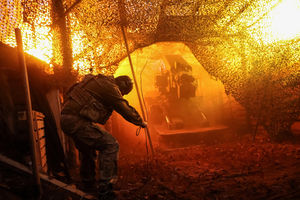Premium
Number of student drug, liquor users on the rise

A glass of whisky. Studies show many people are introduced to drugs and alcohol at a young age.
Entertainment joints near university campuses are usually packed to capacity on Friday evenings. A majority of the customers are aged below 26, mainly students.
Others organise parties in hostels. Brian, a student at Jomo Kenyatta University of Agriculture and Technology, says parties are also organised off campus.
The parties have become initiation events to alcohol and other drugs for new students.
The extent to which university and college students are abusing drugs is alarming, with some ending up in rehab. Some have even dropped out of university.
“Many of the students who do not take alcohol are usually into cigarettes, bhang and other drugs. Those who do not abuse drugs are either in religious clubs or have chosen not to,” says Brian.
Davis, a student in Technical University of Mombasa admits being an addict. In vain has the 21-year-old attempted to abandon drugs. Basic things like concentrating in class have become herculean tasks.
“I was introduced to drugs while in Form Two . I started by taking liquor and smoking bhang. Things went south when I joined university,” Davis says.
He claims to have been introduced to harder drugs by fellow students as they are easily available on and off campus.
“There is a place called Manyani where we meet to smoke and use all kinds of drugs. The university has not succeeded in stopping students from meeting at the spot despite many attempts,” he says.
Popular drugs include alcohol, cannabis, heroin and tobacco.
Others that can be accessed over the counter are methamphetamine (meth) and codeine.
Japheth, another student, says his journey to end addiction has not been easy.
“I was introduced to drugs after Form Four. Fighting addiction is not easy. You find yourself confessing in church today and drinking tomorrow. I became a truant. It has taken almost six years to my final year. I’d go to class drunk and miss exams. I realised that I needed to do something to beat the addiction,” he says.
According to Japheth, students sneak drugs to their rooms for use and sale. They also make cookies with cannabis. And drug use is not restricted to a particular gender.
The National Authority for the Campaign Against Alcohol and Drug Abuse (Nacada) is conducting a study on the extent of the problem at universities.
Recent research on the extent of abuse among primary and secondary school learners shows individuals are introduced to the substances at a young age.
Primary school findings accused adults of initiating children to drug use.
The study showed that 23.4 per cent of secondary school students have taken alcohol, 17 per cent (miraa), 16.1 per cent (prescription drugs), while 14.4 per cent have tried tobacco. It also showed 7.5 per cent have used marijuana, 1.2 per cent (heroin) and 1.1 per cent (cocaine).
Survey of the general populace showed alcohol is the most abused substance with 12.2 per cent of people aged 15 – 65 being active users.
Alcohol abuse also contributes to the highest burden of substance use disorders with 10.4 per cent of the population aged 15 and 65 years being addicted to it, followed by tobacco with a prevalence rate of 8.3 per cent, miraa at 4.1 per cent and cannabis at one per cent.
A fact sheet survey on emerging trends of drug and substance abuse in Kenya released in early July shows that abuse of prescription drugs is also rampant across the country.
Twelve out of the 18 sampled counties had confirmed results of prescription drugs abuse.
The affected counties are Nairobi, Garissa, Meru, Marsabit, Makueni, Mombasa, Kilifi, Kwale, Busia, Kisumu, Uasin Gishu and Nyeri.
The survey released by Nacada CEO Victor Okioma shows that drugs such as tobacco, cannabis, heroin, miraa, shisha, smokeless tobacco products and e-cigarettes or vaping devices among others are abused by many young people.
“Heroin and related drugs have seen a growing market beyond the traditionally known hotspots of Mombasa and Nairobi. There was evidence of heroin abuse in Uasin Gishu, Kisumu, Nakuru, Kiambu and Isiolo,” the survey says.




